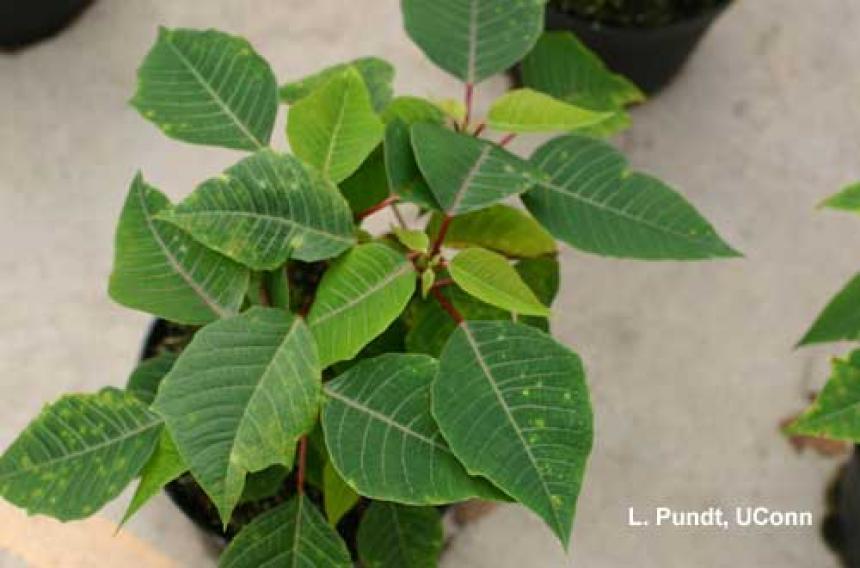Xanthomanas leaf spot on poinsettias begins with dull gray water soaked areas. Yellow or tan spots can develop across the leaf. As the disease progresses, spots turn brown and angular so could be confused with poinsettia scab. So, it's a good idea to send samples to a diagnostic laboratory if you see leaf spot symptoms.
Infected plant material is probably the most important source of contamination; the bacteria can survive in dried leaves for as long as a year and it can reside on the foliage for several moths before initiating disease. Plants with leaf spots should be discarded. Workers should wash their hands after handling diseased plants or soil. Diseased plant debris should be removed from the growing area. Handling of wet foliage should be avoided. Since bacteria can be spread from plant to plant by irrigation water, minimize splashing and reduce leaf wetness by spacing and practices such as ebb and flow irrigation. Copper hydroxide (Champion, Nu-Cop 3) is registered for the control of Xanthomonas on begonia. Bactericides are only marginally effective in controlling bacterial diseases. Sanitation and environmental control are extremely important.
